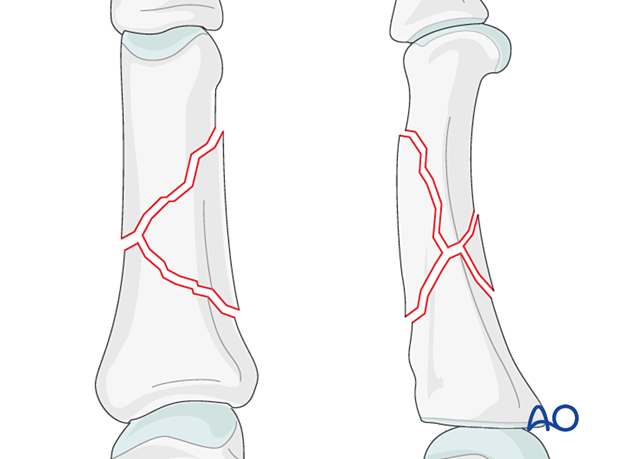Wedge/multifragmentary fracture of the diaphysis
Definition
Fragmentary or comminuted shaft fractures of the proximal phalanges may be wedge (AO/OTA 78.2–5.1.2B) or multifragmentary (78.2–5.1.2C), where 2–5 indicates which finger is injured.

Further characteristics
Comminuted fractures are rarely isolated injuries, as they usually result from high-energy trauma (crushing). Soft-tissue lesions are frequently associated with the potential risk of edema, fibrotic reactions, and eventual stiffness.
The degree and type of comminution depend on the forces and energy that acted on the finger.
Comminuted fractures
Even in the hand, which is well vascularized, small fragment comminution means poor soft-tissue attachment to the fragments and, thereby, biological compromise.

Wedge fracture
In some cases, a large wedge fragment may result from the injury. In such cases, vascularity has not usually been significantly compromised.

Imaging
AP x-ray of a wedge fracture of the 5th proximal phalangeal shaft

Lateral x-ray














